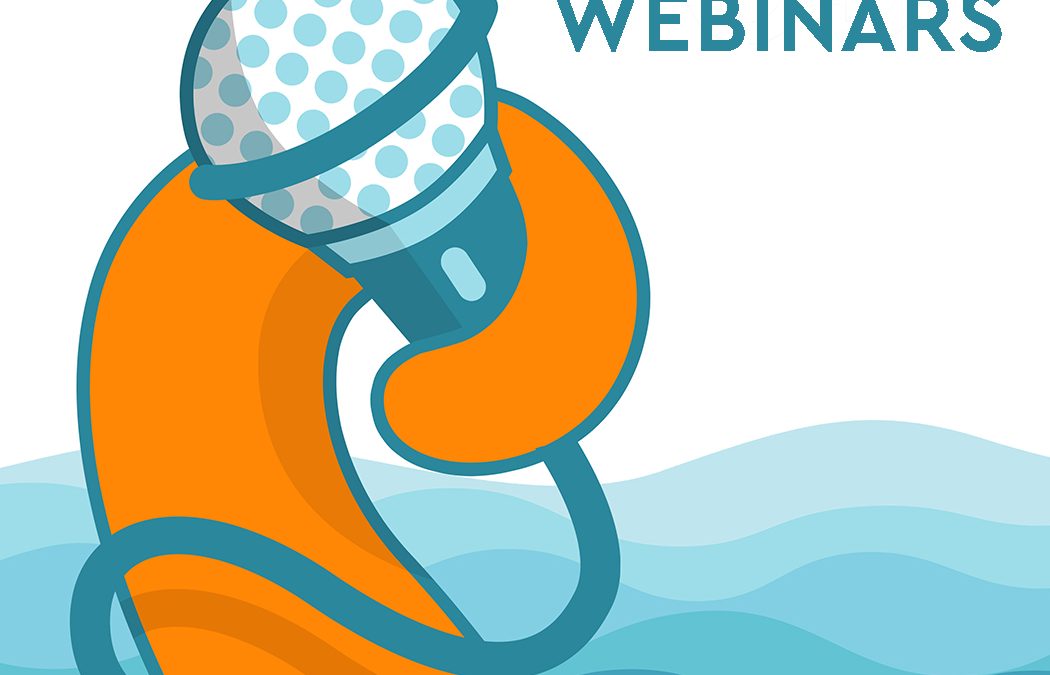
by Sarah Carr, Ph.D. | May 31, 2023 | Past Webinars, Webinars
This webinar originally aired Wednesday, July 19, 2023. Presented by: Brian Hooker of the Bureau of Ocean Energy Management Office of Renewable Energy Programs, Betsy Nicholson of the NOAA Office for Coastal Management, and Joy Page of the US Department of Energy Wind Energy Technology Office. Description: The deployment of offshore wind energy facilities in US waters has tremendous potential to help the country deliver on its climate change commitments and clean energy goals. It is also a reality beginning to take shape with the first commercial-scale facilities beginning construction in 2023 in the Northeast US. In Part 1 of our webinar series on ocean wind energy in US waters, we will explore the historical and policy background and framing behind the US wind energy transition, including an introduction to the planning and regulation processes and the players involved. This webinar will set the groundwork for future discussions exploring offshore wind energy, its future in US waters, and its compatibility and interactions with marine protected areas and other ocean uses.

by Sarah Carr, Ph.D. | Apr 27, 2023 | Past Webinars, Webinars
This webinar originally aired on Thursday, April 27, 2023. Presented by: Lauren Wenzel of the NOAA National Marine Protected Areas Center, Zac Cannizzo of the NOAA National Marine Protected Areas Center and Office of National Marine Sanctuaries, Sara Hutto of the Greater Farallones Association and Greater Farallones and Cordell Bank National Marine Sanctuaries, and Jillian Neuberger of the National Marine Sanctuary Foundation and National Marine Protected Areas Center. Description: U.S. National Marine Sanctuaries and the National Marine Protected Areas Center are leaders in MPA management in a changing ocean. By leveraging the diversity of ecosystems, geographies, cultures, and experiences represented in the National Marine Sanctuary System, they have developed a suite of products that can help other MPA managers advance and accelerate climate-smart management of their MPAs. This webinar will highlight climate monitoring, assessment, and adaptation experiences from the National Marine Sanctuary System and share a number of new products and tools from the National MPA Center, including an MPA Climate Vulnerability Assessment Guide and Climate Adaptation Story Map, designed to help MPA managers accelerate and enhance climate monitoring, assessment, and adaptation within their own MPAs.

by Sarah Carr, Ph.D. | Apr 4, 2023 | Past Webinars, Webinars
This webinar originally aired on Thursday, April 13, 2023. Presented by: Jean-Jacques Goussard of the Ocean Governance Project. Description: The online MPA Resilience Assessment Platform has been developed within the Resilience Partnership, a component of the EU-funded Ocean Governance Project. The platform addresses the ability of MPAs to deal with the environmental, social, economic, cultural, institutional, political, and technical aspects of rapid changes. A key component of the platform – R-SAT, the Resilience Self-Assessment Tool – is a rapid and accessible self-assessment tool that provides clear results and practical guidelines and recommendations that can help MPAs develop skills to deal with rapid changes internally and in the surrounding region. The tool also stimulates discussion that builds a common knowledge base and understanding among managers and other stakeholders and provides important input to management plans. MPA managers from 16 countries around the world are already using R-SAT. New developments with the tool will enable it to be used for prospective MPAs, over a wider geographic area, with more stakeholders, and account for 30×30 objectives.

by Sarah Carr, Ph.D. | Mar 15, 2023 | Past Webinars, Webinars
This webinar originally aired on Wednesday, March 15, 2023. Presented by: Ajay Sawant of Apollo College of Veterinary Medicine, Julia Lara Navarrete of Autonomous University of Baja California, Rebecca Allen of Western Washington University, Serag Heiba of Chinese University of Hong Kong, Summer Snell of Brookes University, and Frances Lang of The Ocean Foundation. Description: With support from The Ocean Foundation and National Geographic Society, a group of young writers between the ages of 18-25 are creating a “youth ocean action toolkit” focused on the ocean literacy principles and marine protected areas (MPAs). This toolkit – written by youth for youth – provides community examples of how youth can take action to conserve their ocean; demonstrates the benefit of MPAs for ocean conservation; includes links to resources and multimedia content; and features a strong social media component. The toolkit will be available this summer in English and Spanish. This webinar featuring some of the toolkit’s youth authors will provide an overview of the content and techniques to engage and empower young people around the world.

by Sarah Carr, Ph.D. | Mar 2, 2023 | Past Webinars, Webinars
This webinar originally aired on Thursday, March 2, 2023. Presented by: Ben Halpern of the University of California, Santa Barbara. Description: Feeding humanity puts enormous environmental pressure on our planet. These pressures are unequally distributed, yet we have piecemeal knowledge of how they accumulate across marine, freshwater, and terrestrial systems. This webinar will present global geospatial analyses detailing greenhouse gas emissions, freshwater use, habitat disturbance and nutrient pollution generated by 99% of total reported production of aquatic and terrestrial foods in 2017. These results have also been rescaled and combined to map the estimated cumulative pressure, or ‘footprint’, of food production. On land, five countries contribute nearly half of food’s cumulative footprint, and just 10% of the planet contributes 93% of this footprint. The pressures that drive these footprints vary substantially by food and country. Importantly, the cumulative pressure per unit of food production (efficiency) varies spatially for each food type such that rankings of foods by efficiency differ sharply among countries. These disparities provide the foundation for efforts to steer consumption towards lower-impact foods and ultimately the system-wide restructuring essential for sustainably feeding humanity.

